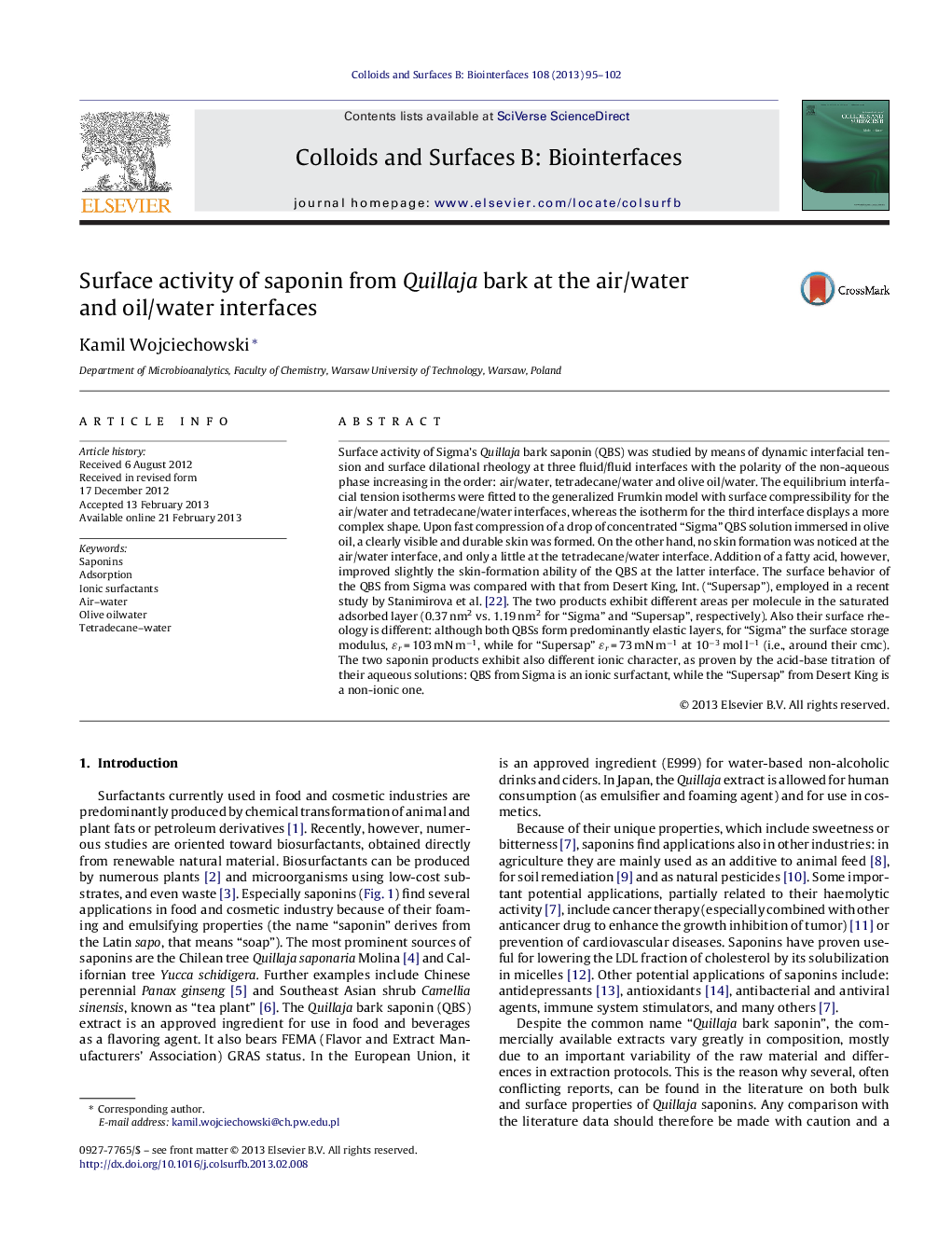| کد مقاله | کد نشریه | سال انتشار | مقاله انگلیسی | نسخه تمام متن |
|---|---|---|---|---|
| 600164 | 1454296 | 2013 | 8 صفحه PDF | دانلود رایگان |

▶ Surface activity of Sigma's Quillaja bark saponin (QBS) is described. ▶ Effect of the non-aqueous phase is studied at air/water, tetradecane/water and olive oil/water interfaces. ▶ A “skin” formation is observed at the olive oil/water interface. ▶ The “skin” forms also at tetradecane/water interface, especially upon addition of fatty acid. ▶ QBS from different commercial sources show drastically different surface properties.
Surface activity of Sigma's Quillaja bark saponin (QBS) was studied by means of dynamic interfacial tension and surface dilational rheology at three fluid/fluid interfaces with the polarity of the non-aqueous phase increasing in the order: air/water, tetradecane/water and olive oil/water. The equilibrium interfacial tension isotherms were fitted to the generalized Frumkin model with surface compressibility for the air/water and tetradecane/water interfaces, whereas the isotherm for the third interface displays a more complex shape. Upon fast compression of a drop of concentrated “Sigma” QBS solution immersed in olive oil, a clearly visible and durable skin was formed. On the other hand, no skin formation was noticed at the air/water interface, and only a little at the tetradecane/water interface. Addition of a fatty acid, however, improved slightly the skin-formation ability of the QBS at the latter interface. The surface behavior of the QBS from Sigma was compared with that from Desert King, Int. (“Supersap”), employed in a recent study by Stanimirova et al. [22]. The two products exhibit different areas per molecule in the saturated adsorbed layer (0.37 nm2 vs. 1.19 nm2 for “Sigma” and “Supersap”, respectively). Also their surface rheology is different: although both QBSs form predominantly elastic layers, for “Sigma” the surface storage modulus, εr = 103 mN m−1, while for “Supersap” εr = 73 mN m−1 at 10−3 mol l−1 (i.e., around their cmc). The two saponin products exhibit also different ionic character, as proven by the acid-base titration of their aqueous solutions: QBS from Sigma is an ionic surfactant, while the “Supersap” from Desert King is a non-ionic one.
Figure optionsDownload as PowerPoint slide
Journal: Colloids and Surfaces B: Biointerfaces - Volume 108, 1 August 2013, Pages 95–102